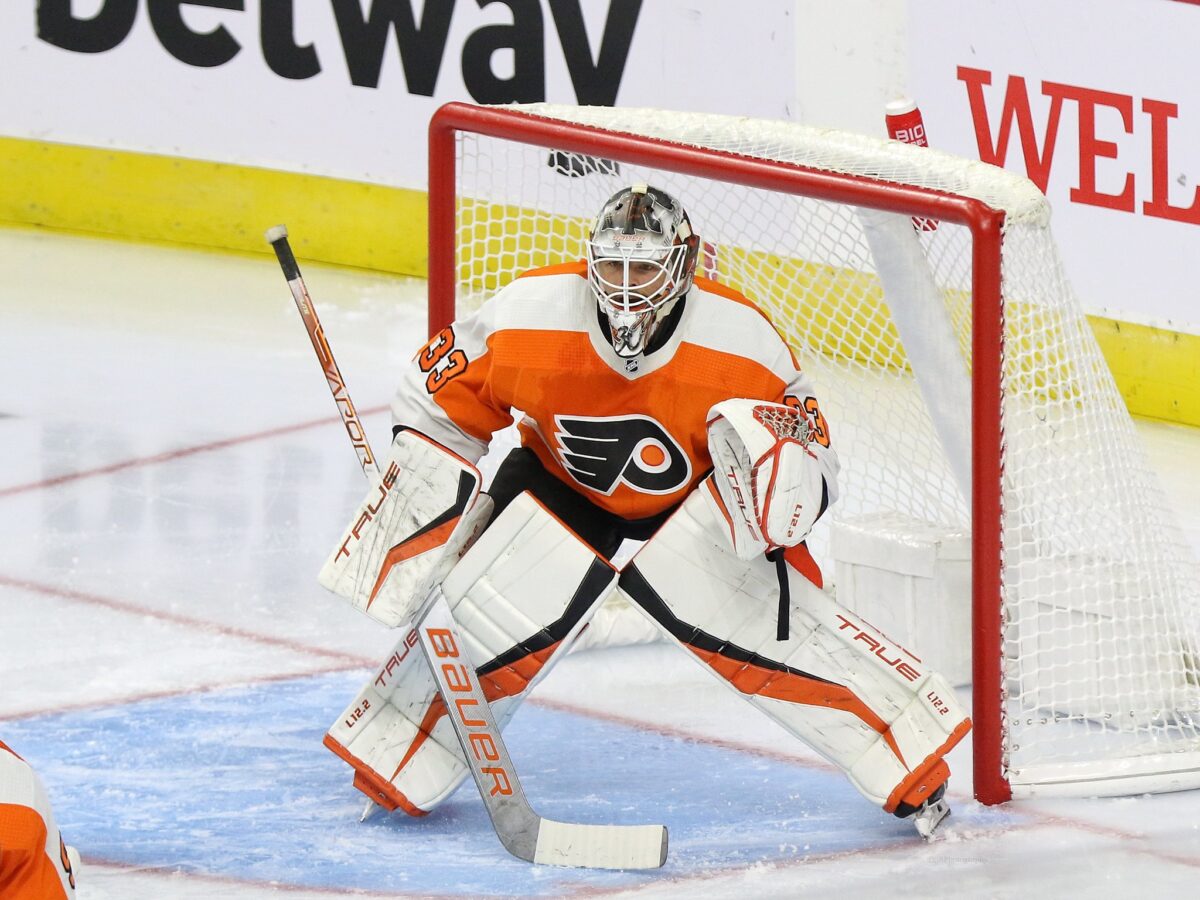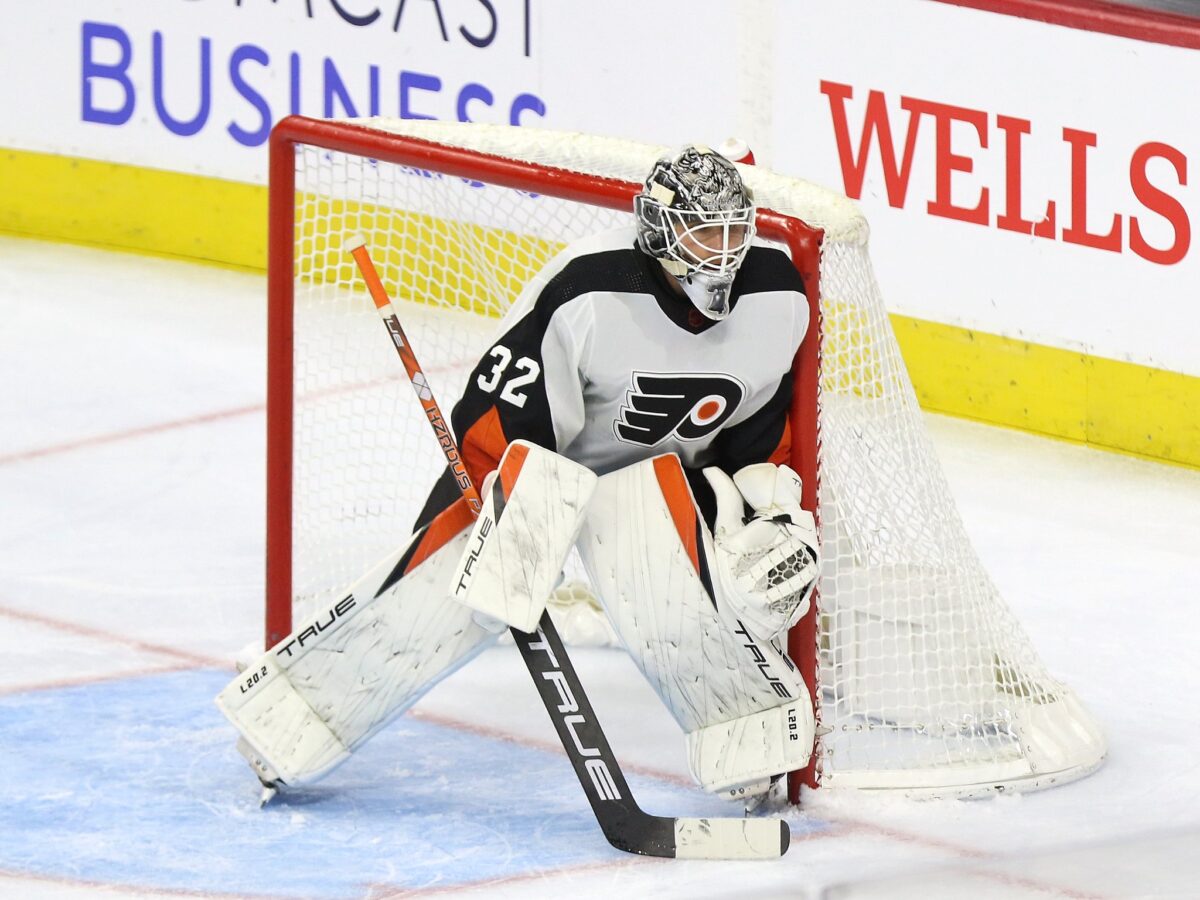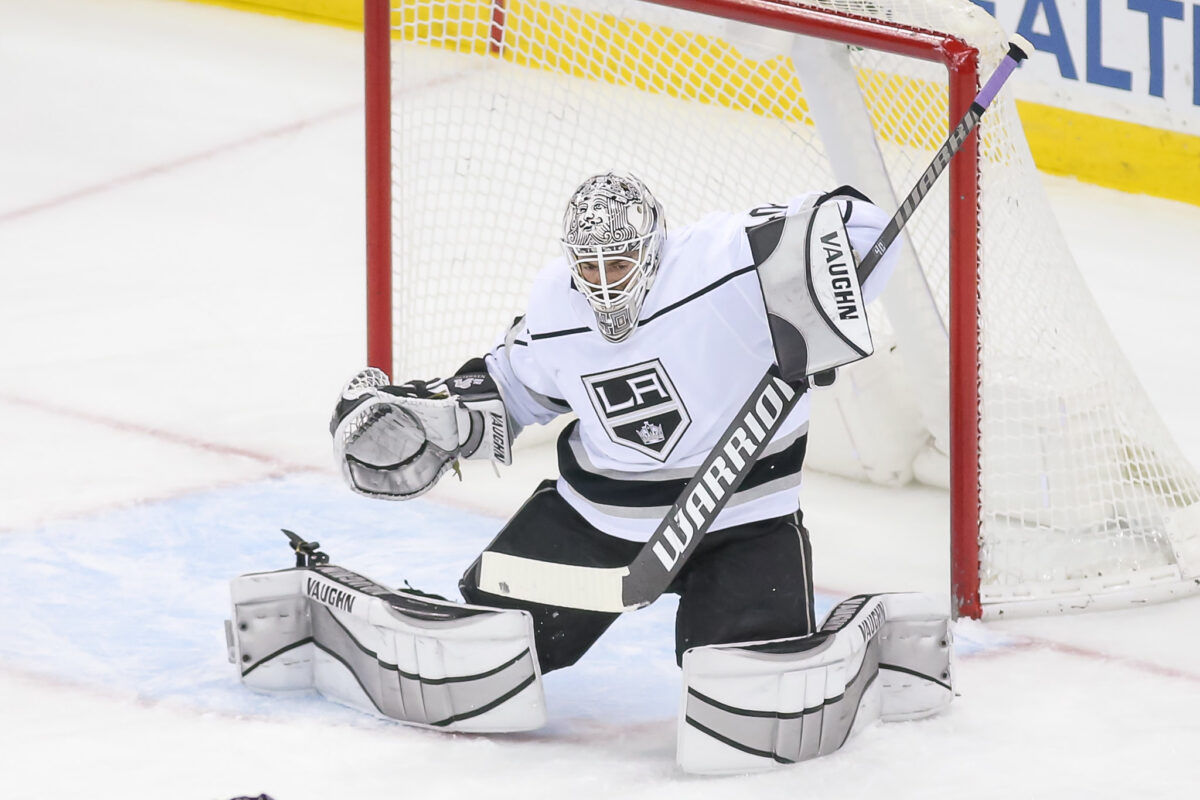It’s no secret that goaltending has not historically been a strength for the Philadelphia Flyers. In nine playoff series since 2011, the Flyers have used multiple starting goaltenders in a series six times. Five seasons ago, the franchise set an NHL record for most goaltenders used in a single season (eight). It’s a weakness that has plagued the team for years and years.
Carter Hart’s emergence has helped change that narrative. He has struggled at times, including an atrocious 2020-21 campaign. Overall, though, Hart is the best goaltender the team has had in a long time. Last season, he ranked 15th in the NHL with 10.3 goals saved above expected in a career-high 54 starts.
But that still leaves 28 games with the net unaccounted for. The importance of goaltending depth has only increased in recent years. Case in point: the Vegas Golden Knights won the Stanley Cup last season with their first three options (Robin Lehner, Logan Thompson, Laurent Brossoit) on the shelf. With Hart’s future in Philadelphia in question — the 24-year-old restricted free agent (RFA)-to-be at season’s end was heavily involved in trade rumors earlier in the offseason — the emphasis on having a strong No. 2 netminder grows further.
Fortunately for the Flyers, they have options to choose from. Their two goaltenders not named Hart to play for the team last season are back. There’s also a new name in the picture who was once a highly regarded prospect with over 100 games of NHL experience. Each has their strengths and weaknesses. Ultimately, only one can claim the job. Here’s a look at each of them and their chances of breaking camp with the team.
Samuel Ersson
Pros: There’s no question which of the three options played the best last season. Use whatever stat you want: wins, save percentage (SV%), goals-against average (GAA), goals saved above expected (GSAx), it doesn’t matter. Among the three candidates, Samuel Ersson reigned supreme in all of them in 2023.
Ersson ranked 24th in the entire NHL in GSAx per 60 minutes (.158), just a hair behind Hart (.195, 21st). If you throw out the 7-0 clunker against the New Jersey Devils where the team hung him out to dry and John Tortorella wouldn’t pull him to give Hart a rest, then Ersson would’ve finished with a .906 SV%. He’s still young enough to be considered a prospect, too. It’s hard not to call him the favorite heading into camp.

Cons: Those numbers, while impressive, came in a small, 12-game sample size (10 starts). The biggest reason why Ersson didn’t play more in the NHL is because he was a waivers-exempt 22-year-old. This season, he’s a waivers-exempt 23-year-old. There’s an argument that Ersson is better served playing consistently as the starter for the Lehigh Valley Phantoms than playing less frequently in the NHL. The waivers-exempt part matters less this season because his returning competition is less likely to be claimed now than at the start of last season, but it could be a tie-breaker working against him.
Felix Sandström
Pros: There’s a reason why Felix Sandström was once a prospect rated on a similar level as Hart (from ‘In race to NHL, Hart and Sandstrom doing things right,’ Courier Post, July 9, 2017). He has a strong track record dating back to his days in the Swedish Hockey League (SHL). He showed promise at the NHL level in 2021-22, recording a .910 SV% in five contests. He actually outperformed Ersson in American Hockey League (AHL) games last season, posting a .911 SV% to Ersson’s .900. At 26, Sandström isn’t young, but he’s not old, either, especially for a goaltender. He has always had outstanding athleticism, which gives him a high upside as well.

Cons: Sandström had his shot last season, serving as the Flyers’ primary backup and playing in 20 games. Let’s just say they didn’t go so well. Out of 79 goalies to play at least 10 NHL games last season, Sandström’s .880 SV% ranked 75th. He showed flashes of quality play but always seemed to allow at least one stoppable shot to sneak past him. They weren’t all “bad” goals, but making one fewer save than you should per game adds up over a season.
Related: Philadelphia Flyers’ 2023-24 Lineup Projection
His AHL numbers in past seasons were closer to fine than last season’s strong results, hovering just over .900. He makes just $775,000, which actually makes him almost $100,000 cheaper than Ersson. But the Flyers aren’t that cap-strapped, and it doesn’t seem especially likely that another team would claim Sandström given his age and recent track record.
Cal Petersen
Pros: Once the goaltender of the future for the Los Angeles Kings, Cal Petersen came over to Philadelphia in the offseason as part of the three-team Ivan Provorov deal. Originally a fifth-round pick of the Buffalo Sabres, the 28-year-old signed with the Kings as an undrafted free agent after three stellar seasons at Notre Dame and quickly picked up where he left off. He sparkled in small sample sizes in 2018-19 and 2019-20 before strong results in 35 games played in 2020-21 put him on the map. Through his first three NHL seasons, Petersen had an excellent .916 SV%.
If Petersen resembles that form in any shape, he’ll almost certainly be the team’s backup. Wouldn’t you know, he did just that for Team USA at the World Championship, finishing with a .956 SV%. That resume makes him seem like the clear front-runner for this spot. So, why isn’t he?

Cons: The odds of him resembling that form are not stellar, given he hasn’t over the last two seasons. Petersen notched a not-good .895 SV% in 37 games in 2021-22, then utterly cratered last season to the tune of a non-playable .868 mark that resulted in him being waived and sent to the AHL, where he was fine (.904 SV% in 40 games). That would be bad enough on its own, but the timing couldn’t have been worse for the Kings, who signed Petersen to a three-year, $15 million extension in 2021.
The Flyers weren’t trading for him because they believed in his talent. They were trading for him because it allowed them to get two second-round picks and prospect Helge Grans back from the Kings, plus made them comfortable retaining $2 million on Provorov to facilitate his move to Columbus. Petersen is 28, so it’s not like this is an age-related decline, nor does he have any injury history. But, in a way, that almost makes things worse. There’s no reasonable explanation for Petersen’s decline, and therefore, no sensible reason to believe that he will magically bounce back in Philadelphia.
Final Verdict
Ersson is clearly the front-runner for this race, from statistics to John Tortorella’s comments last season to just common sense (from ‘Why Felix Sandström is back as the Flyers’ backup goalie over Samuel Ersson, The Athletic, Jan. 23, 2023). He’s younger and better (at least recently) than the other options. He has the most upside of any of the competition. What else could the Flyers ask for?
Of course, goaltending is weird. Look at Petersen’s career trajectory, for example. Sometimes good goalies become bad for seemingly no reason. Sometimes the opposite happens. If Sandström can harness his athleticism, Petersen turns back the clock or Ersson struggles to live up to his potential, an upset is definitely in the realm of possibility. None of these options are perfect, but given the volatility of the Flyers’ goalie struggles in recent years, having this many legitimate options is a positive development.
Advanced Statistics via MoneyPuck.com
